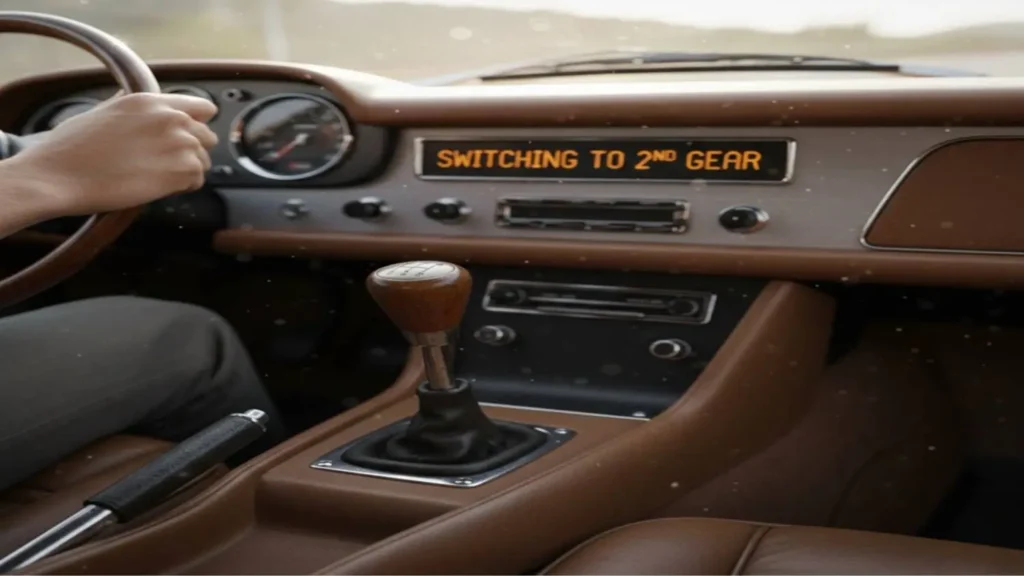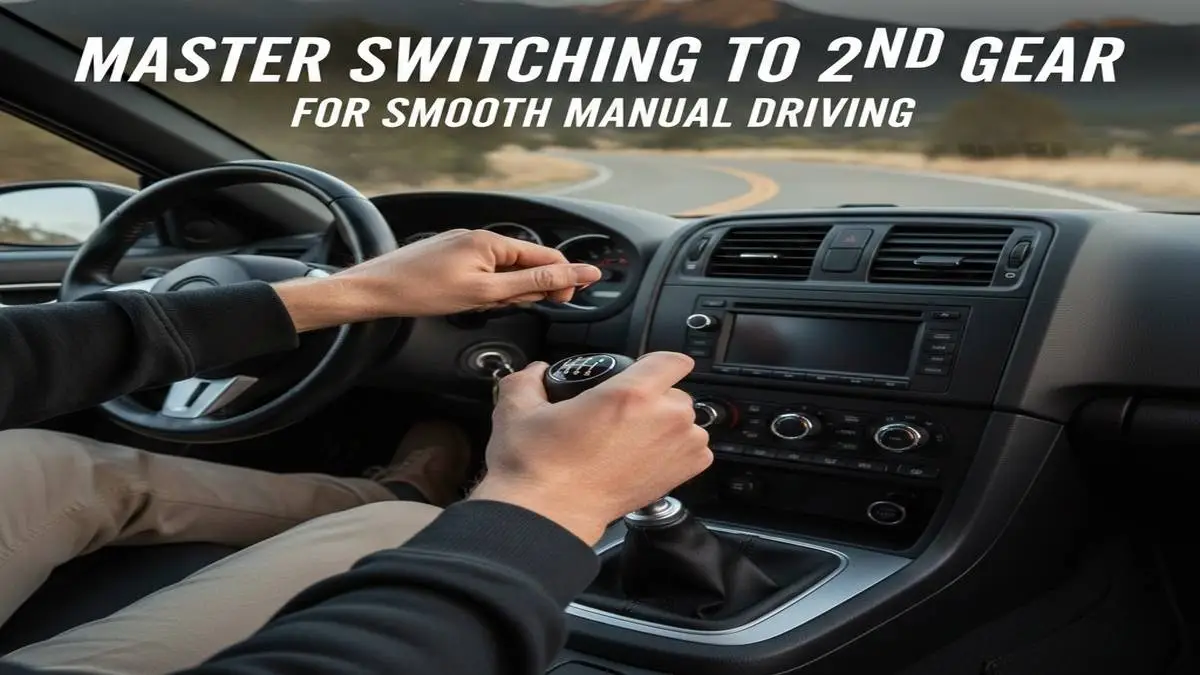Driving a manual transmission car is a skill that offers a sense of control and connection with the vehicle unmatched by automatic systems. Among the fundamental aspects of manual driving is the ability to shift gears efficiently. One of the most crucial transitions in this process is moving from first to second gear. Switching to 2nd gear means shifting your car from first gear into second after gaining initial speed. This maneuver is essential for smooth acceleration, engine longevity, and fuel efficiency.
Table of Contents
What Is Shifting to 2nd Gear?
Shifting to 2nd gear refers to moving your vehicle from first gear into the second gear after achieving enough initial speed. First gear provides the maximum torque, which is crucial for starting the car from a complete stop. However, once the vehicle gains momentum, staying in first gear can strain the engine, reduce fuel efficiency, and create an uncomfortable driving experience.
Why Switching to 2nd Gear Matters
Understanding the significance of shifting into 2nd gear goes beyond just moving the gear lever. Proper timing and execution impact several aspects of driving:
1. Smooth Acceleration
First gear is designed for initial acceleration, but its high torque and low speed make it unsuitable for continuous driving. Shifting to second gear allows the car to continue accelerating without abrupt jerks, providing a comfortable ride for both the driver and passengers.
2. Engine Protection
Driving too long in first gear can force the engine to operate at unnecessarily high RPMs, leading to wear and tear. Moving to 2nd gear reduces engine stress, promoting longevity and reducing the likelihood of mechanical problems.
3. Improved Fuel Efficiency
Fuel consumption is directly linked to engine RPM. Operating at high RPMs in first gear consumes more fuel. By transitioning to 2nd gear at the right time, the engine can run more efficiently, contributing to better fuel economy and lower emissions.
4. Enhanced Vehicle Control
Manual transmission vehicles rely on driver input for optimal control. Shifting to second gear at the right moment ensures the car responds predictably to acceleration and deceleration, reducing the risk of stalling or jerky movements.
Benefits of Mastering the Shift
Properly executing the shift to second gear offers long-term advantages for both the driver and the vehicle:
- Extended Engine Life: Reduces unnecessary wear and tear on the engine and transmission.
- Improved Fuel Efficiency: Operating within optimal RPM ranges lowers fuel consumption.
- Enhanced Driving Comfort: Smooth acceleration and deceleration create a pleasant ride.
- Better Traffic Management: Predictable vehicle behavior makes city and highway driving safer.

Advanced Tips for Enthusiasts
For experienced manual drivers, refining second-gear shifts can enhance control and performance. Techniques like heel-toe coordination improve smooth downshifts, while engine braking in 2nd gear helps maintain speed on declines without overusing brakes. Learning to match RPM with gear shifts ensures efficient acceleration and reduced engine strain. Practicing these advanced methods not only boosts driving confidence but also maximizes fuel efficiency, prolongs engine life, and provides a more engaging driving experience.
When to Shift from 1st to 2nd Gear
The timing of a gear shift is critical. Shifting too early or too late can compromise performance and safety. Here are key indicators that it’s time to move from first to second gear:
- Speed Threshold: Most vehicles are designed to shift from first to second gear at approximately 10-15 km/h (6-9 mph). This can vary depending on the car’s engine and transmission specifications.
- Engine Sound: A high-pitched, strained engine sound indicates that the RPM is too high for first gear. Listening carefully allows drivers to make timely gear changes.
- Tachometer Reading: For cars equipped with a tachometer, shifting to 2nd gear around 2,500–3,000 RPM is generally optimal for smooth acceleration and engine health.
Step-by-Step Guide to Shifting into Second Gear
Switching to second gear may seem straightforward, but proper technique ensures smoothness and avoids unnecessary wear on the clutch and gearbox. Here’s a professional step-by-step guide:
- Depress the Clutch Fully: Press the clutch pedal completely to disengage the engine from the transmission. This prevents gear grinding and ensures a smooth transition.
- Release the Accelerator: Temporarily lift your foot off the accelerator to reduce engine load and allow an easy shift.
- Move the Gear Stick to Second Gear: Gently move the gear stick from first to second gear. Avoid forcing it, as this can damage the gearbox.
Mastering this coordination takes practice, but once internalized, it becomes a fluid and natural part of driving.
Practical Tips for Mastering the Shift
While theory is essential, practice is the ultimate teacher. Here are practical tips to enhance your manual driving skills:
- Practice in a Safe Environment: Empty parking lots or quiet streets are ideal for mastering clutch control and gear transitions without traffic pressure.
- Gradual Acceleration: Focus on smooth pedal control rather than rapid acceleration.
- Familiarize with Your Vehicle: Every car’s clutch engagement point and engine response differ. Spend time understanding your vehicle’s unique characteristics.
- Use Both Hands and Feet Wisely: Keep your right hand near the gear lever and your left foot ready to modulate the clutch for optimal timing.
The Role of Second Gear in Driving Dynamics
Switching to second gear is not merely a procedural task; it significantly influences overall driving dynamics. Proper use of the second gear ensures:
- Controlled Acceleration: Maintains momentum while preventing sudden jerks.
- Enhanced Vehicle Control: Smooth gear transitions reduce the risk of skidding or wheel spin, particularly on wet or uneven roads.
- Engine Longevity: Reduces wear by operating within optimal RPM ranges.
For urban driving with frequent stops and starts, mastering 2nd gear can greatly improve efficiency and comfort. In hilly terrains, careful timing ensures that the car does not lose momentum or stall when navigating inclines.
Troubleshooting Common Issues
Even with proper technique, drivers may encounter challenges during 2nd-gear transitions. Here’s how to troubleshoot:
Stalling
- Cause: Releasing the clutch too fast or insufficient acceleration.
- Solution: Practice smoother clutch release and apply moderate accelerator pressure.
Jerky Movements
- Cause: Abrupt pedal coordination.
- Solution: Synchronize clutch release and accelerator application.
Excessive Engine Noise
- Cause: Delaying the shift or over-revving in first gear.
- Solution: Shift promptly based on RPM and vehicle speed.
FAQs
Q1: Can I skip 2nd gear and shift from first to third?
While possible in some situations, skipping second gear is generally not recommended. Doing so can strain the engine, reduce acceleration efficiency, and potentially stall the car.
Q2: How do I know if I’m shifting too early or too late?
Pay attention to the engine sound and RPM. Early shifts may cause stalling, while late shifts can lead to high RPMs and engine strain.
Q3: Does second gear affect fuel efficiency?
Yes. Second gear allows the engine to operate at lower RPMs compared to first gear at higher speeds, improving fuel efficiency.
Final Thought
Mastering the shift from first to second gear is more than a basic driving task; it is a cornerstone of efficient, safe, and enjoyable manual driving. Proper timing, smooth clutch control, and attentive acceleration not only protect your engine but also enhance fuel efficiency and overall vehicle performance. With practice, this skill becomes second nature, empowering drivers to navigate roads confidently while ensuring longevity and reliability for their car.


